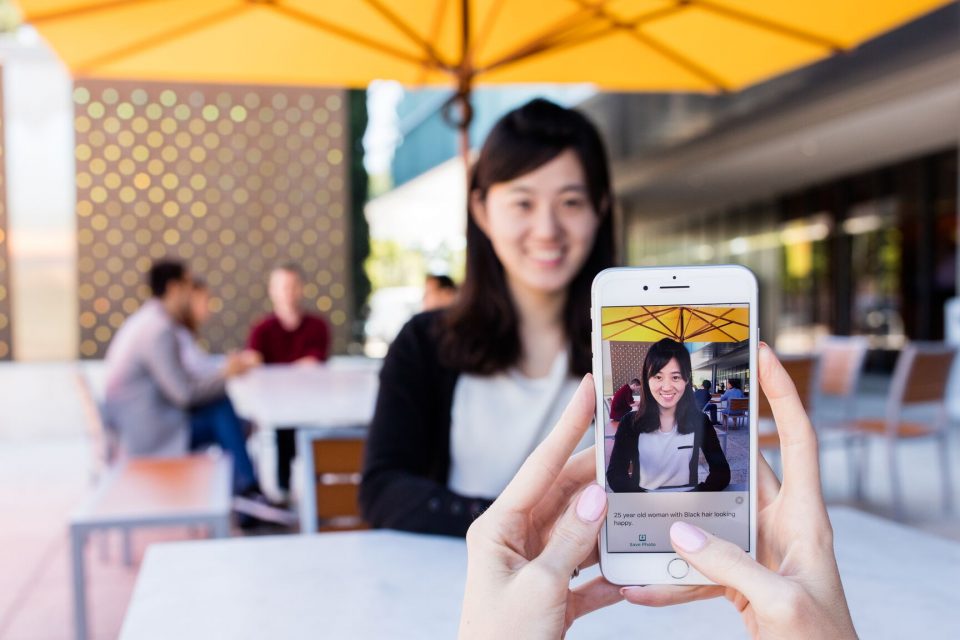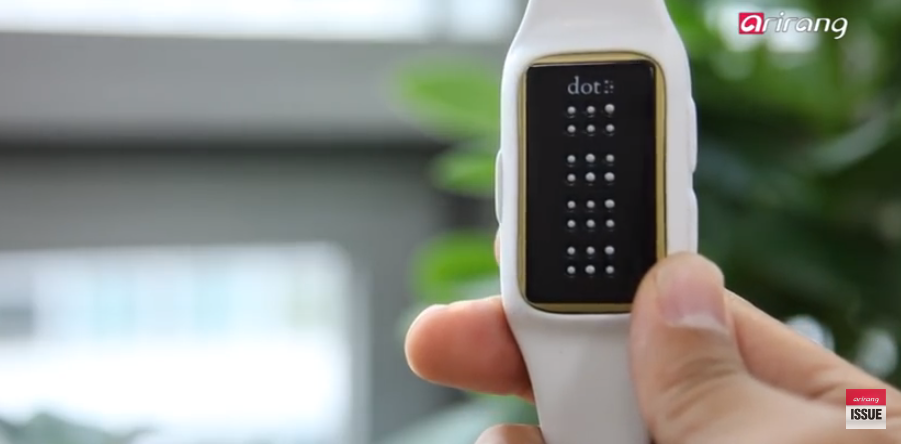OCR Devices for the Blind: Turning Print to Speech in Real-Time
OCR Devices for the Blind: Turning Print to Speech in Real-Time
Blog Article
Discover Innovative Devices Designed for the Aesthetically Impaired
The development of cutting-edge devices for the visually damaged stands for a considerable improvement in ease of access and freedom. Technologies such as clever glasses with AI capabilities and mobile applications created to supply acoustic descriptions are improving day-to-day experiences for individuals. Furthermore, wearable gadgets that employ haptic responses improve ecological awareness, while modern Braille advancements provide brand-new methods to engage with text. As these tools remain to develop, their effect on the lives of those with visual disabilities increases important inquiries about the future of inclusivity and freedom in numerous aspects of life. What lies ahead in this technological landscape?
Smart Glasses for Navigating

Smart glasses created for navigation are reinventing the way aesthetically damaged individuals connect with their atmosphere. These innovative gadgets make use of a combination of video camera technology, expert system, and acoustic feedback to offer real-time info about environments. By using challenge discovery systems, clever glasses can signal individuals to potential risks, making it possible for much safer mobility in both strange and familiar setups.
The assimilation of GPS modern technology better enhances navigation capacities, permitting users to receive acoustic directions as they move. This hands-free method not only fosters independence yet also empowers visually damaged individuals to browse metropolitan landscapes with enhanced self-confidence. Additionally, numerous wise glasses are furnished with features that recognize spots and road indications, supplying contextual details that boosts the individual experience.
In addition, the growth of these gadgets is consistently advancing, with companies working to improve the accuracy of object recognition and increase the range of navigational attributes. As smart glasses end up being extra obtainable and inexpensive, they hold the potential to considerably change every day life for aesthetically impaired customers. Ultimately, these innovative devices represent a crucial step towards inclusivity, offering improved wheelchair and a better feeling of freedom for individuals navigating the world around them.

Mobile Apps for Daily Living
Just how can mobile applications boost the lives of aesthetically impaired individuals? Mobile apps are changing the method aesthetically damaged individuals browse their settings, handle daily tasks, and accessibility info. These applications give necessary assistance via various performances, promoting self-reliance and enhancing top quality of life.
Several cutting-edge mobile applications are made specifically for day-to-day living. Applications like Be My Eyes connect visually damaged customers with sighted volunteers via video telephone calls, enabling them to receive real-time help with tasks such as checking out labels or navigating unfamiliar spaces. Seeing AI, established by Microsoft, uses man-made intelligence to describe environments, checked out text, and recognize objects, properly changing a mobile phone into an effective tool for daily help.
Furthermore, navigating applications tailored for the aesthetically damaged, such as Aira and BlindSquare, offer audio-based instructions and environmental details, allowing customers to traverse their environments securely and confidently. Beyond navigation and prompt help, mobile applications also sustain organization and job management, with attributes that aid users establish reminders, develop to-do lists, and track consultations. In summary, mobile applications act as indispensable sources, encouraging visually impaired people to lead more independent and satisfying lives.
Wearable Technologies for Help
Empowerment via technology is progressively noticeable in the realm of wearable tools designed to help aesthetically damaged people. These innovative tools integrate seamlessly right into every day life, enhancing navigating and supplying essential comments to individuals. For instance, clever glasses outfitted with video cameras can review and recognize faces text out loud, enabling customers to engage more with confidence in professional and social settings.
Another noteworthy advancement is making use of haptic comments systems in wearable tools. These systems use vibrations or various other tactile signals to share details about the user's environment, such as obstacles or modifications in terrain, improving mobility and safety. Wearable technologies also consist of wristbands that attach to mobile phones, informing individuals to notices through refined vibrations, hence enhancing connectivity without reliance on aesthetic signs.
As these innovations remain to develop, they are not only improving independence for aesthetically damaged individuals yet additionally fostering a higher sense of inclusion in culture. america glasses By linking the void in between obstacles encountered in day-to-day living and the possibility for freedom, wearable modern technologies act as pivotal devices in the quest for equal rights and empowerment for those with visual disabilities.
Audio Summary Tools
Audio summary tools play a critical role in boosting access for aesthetically damaged individuals, providing them with the ability to engage with aesthetic media. Wearable technology for low vision. These devices supply narrated descriptions of vital aesthetic components in films, tv shows, and live efficiencies, making sure that individuals can completely understand the context and emotions conveyed with visuals
Sound description can be incorporated right into various systems, including streaming services, movie theater screenings, and live cinema. Lots of popular streaming services currently consist of audio description as an access feature, enabling viewers to choose it easily. In enhancement to conventional media, specialized apps also exist, offering audio summaries for art events, museums, and various other cultural events.
The effectiveness of audio summary rests on the ability of the narrators, that should share aesthetic details succinctly without interfering with the original audio. Advancements in this field are likewise leading the way for even more individualized experiences, where customers can change the level of detail and pacing according to their preferences.
Braille Innovations and Tools
Braille gadgets and advancements have actually considerably changed the way aesthetically impaired individuals connect with message and info. Modern advancements have resulted in the development of functional tools that boost proficiency and independence amongst individuals. Notably, Braille present innovations have actually developed, enabling dynamic analysis experiences. These gadgets convert electronic message right into Braille, making it possible for users to access a huge range of info on mobile phones, computers, and tablets.
Additionally, mobile Braille notetakers integrate conventional Braille input with contemporary performances, assisting in note-taking, scheduling, and record editing and enhancing on the move. Screen readers for the blind. These compact tools usually feature text-to-speech capacities, connecting the space between Braille and auditory details
In enhancement, ingenious Braille printers have actually emerged, permitting customers to create Braille tags, papers, and academic products successfully. This ease of access fosters better involvement in professional and instructional environments, eventually promoting inclusivity.
In addition, research study right into smart Braille modern technologies remains to broaden. Devices that include fabricated intelligence are being checked out to provide real-time navigating assistance and contextual information, boosting the user experience in varied settings. In general, these innovations reflect a commitment to equipping aesthetically impaired individuals via innovation, guaranteeing they can conveniently access and involve with the world around them.

Verdict
The development of cutting-edge devices for the visually damaged considerably enhances freedom and top quality of life. Smart glasses, mobile applications, wearable technologies, audio description devices, and Braille advancements collectively equip individuals by giving necessary navigating aid, ecological recognition, and enhanced reading experiences. These modern technologies not only foster higher addition yet likewise promote freedom in daily tasks, eventually adding to a more easily accessible and equitable society for visually damaged individuals. Proceeded advancement in this field holds next page assurance for additional enhancements.
As clever glasses become extra obtainable and inexpensive, they hold the possible to dramatically transform daily life for visually impaired users. Mobile apps are reinventing the way aesthetically damaged users navigate their settings, handle day-to-day jobs, and access details. Apps like Be My Eyes connect visually impaired customers with sighted websites volunteers via video calls, permitting them to get real-time help with jobs such as checking out tags or navigating unfamiliar rooms.Additionally, navigating applications customized for the visually damaged, such as Aira and BlindSquare, use audio-based instructions and ecological details, making it possible for users to traverse their surroundings securely and with confidence.The development of cutting-edge devices for the aesthetically damaged significantly boosts self-reliance and high quality of life.
Report this page